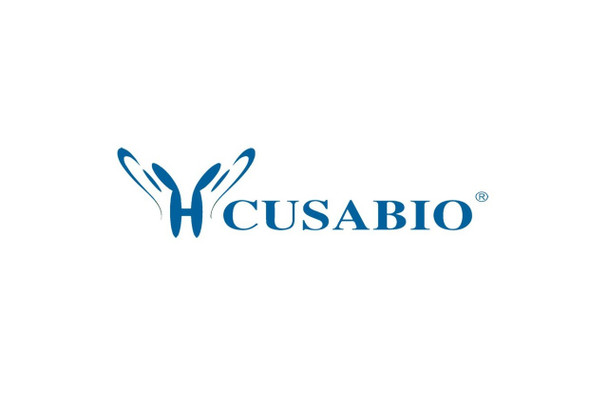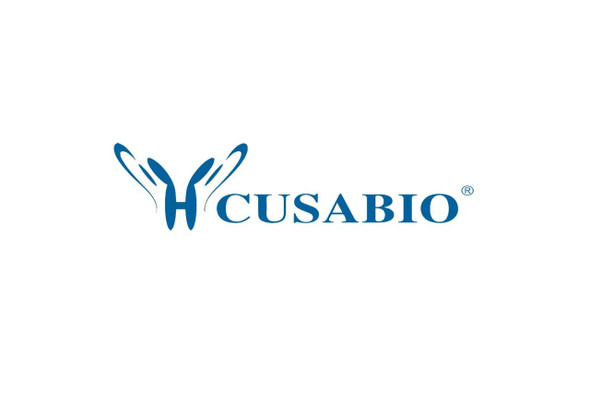Cusabio Mouse Recombinants
Recombinant Mouse Suppressor of cytokine signaling 1 (Socs1) | CSB-EP022388MO
- SKU:
- CSB-EP022388MO
- Availability:
- 3 - 7 Working Days
Description
Recombinant Mouse Suppressor of cytokine signaling 1 (Socs1) | CSB-EP022388MO | Cusabio
Alternative Name(s): JAK-binding protein
Gene Names: Socs1
Research Areas: Immunology
Organism: Mus musculus (Mouse)
AA Sequence: MVARNQVAADNAISPAAEPRRRSEPSSSSSSSSPAAPVRPRPCPAVPAPAPGDTHFRTFRSHSDYRRITRTSALLDACGFYWGPLSVHGAHERLRAEPVGTFLVRDSRQRNCFFALSVKMASGPTSIRVHFQAGRFHLDGSRETFDCLFELLEHYVAAPRRMLGAPLRQRRVRPLQELCRQRIVAAVGRENLARIPLNPVLRDYLSSFPFQI
Source: E.coli
Tag Info: N-terminal 10xHis-tagged and C-terminal Myc-tagged
Expression Region: 1-212aa
Sequence Info: Full Length
MW: 28.7 kDa
Purity: Greater than 85% as determined by SDS-PAGE.
Relevance: SOCS family proteins form part of a classical negative feedback system that regulates cytokine signal transduction. SOCS1 is involved in negative regulation of cytokines that signal through the JAK/STAT3 pathway. Through binding to JAKs, inhibits their kinase activity. In vitro, also suppresses Tec protein-tyrosine activity. Appears to be a major regulator of signaling by interleukin 6 (IL6) and leukemia inhibitory factor (LIF). Regulates interferon-gamma mediated sensory neuron survival. Probable substrate recognition component of an ECS (Elongin BC-CUL2/5-SOCS-box protein) E3 ubiquitin-protein ligase complex which mediates the ubiquitination and subsequent proteasomal degradation of target proteins. Seems to recognize JAK2. SOCS1 appears to be a negative regulator in IGF1R signaling pathway
Reference: "SOCS-1 binds to multiple signaling proteins and suppresses Steel factor-dependent proliferation." De Sepulveda P., Okkenhaug K., La Rose J., Hawley R.G., Dubreuil P., Rottapel R. EMBO J. 18:904-915(1999)
Storage: The shelf life is related to many factors, storage state, buffer ingredients, storage temperature and the stability of the protein itself. Generally, the shelf life of liquid form is 6 months at -20?/-80?. The shelf life of lyophilized form is 12 months at -20?/-80?.
Notes: Repeated freezing and thawing is not recommended. Store working aliquots at 4? for up to one week.
Function: SOCS family proteins form part of a classical negative feedback system that regulates cytokine signal transduction. SOCS1 is involved in negative regulation of cytokines that signal through the JAK/STAT3 pathway. Through binding to JAKs, inhibits their kinase activity. In vitro, also suppresses Tec protein-tyrosine activity (By similarity). Appears to be a major regulator of signaling by interleukin 6 (IL6) and leukemia inhibitory factor (LIF). Regulates interferon-gamma mediated sensory neuron survival. Probable substrate recognition component of an ECS (Elongin BC-CUL2/5-SOCS-box protein) E3 ubiquitin-protein ligase complex which mediates the ubiquitination and subsequent proteasomal degradation of target proteins. Seems to recognize JAK2 (By similarity). SOCS1 appears to be a negative regulator in IGF1R signaling pathway (By similarity).
Involvement in disease:
Subcellular Location: Nucleus, Cytoplasmic vesicle
Protein Families: SOCS1 family
Tissue Specificity: High expression in thymus. Lower expression in lung and spleen. Expressed in both Th1 and Th2 cells.
Paythway:
Form: Liquid or Lyophilized powder
Buffer: If the delivery form is liquid, the default storage buffer is Tris/PBS-based buffer, 5%-50% glycerol. If the delivery form is lyophilized powder, the buffer before lyophilization is Tris/PBS-based buffer, 6% Trehalose, pH 8.0.
Reconstitution: We recommend that this vial be briefly centrifuged prior to opening to bring the contents to the bottom. Please reconstitute protein in deionized sterile water to a concentration of 0.1-1.0 mg/mL.We recommend to add 5-50% of glycerol (final concentration) and aliquot for long-term storage at -20?/-80?. Our default final concentration of glycerol is 50%. Customers could use it as reference.
Uniprot ID: O35716
HGNC Database Link: N/A
UniGene Database Link: UniGene
KEGG Database Link: KEGG
STRING Database Link: STRING
OMIM Database Link: N/A









